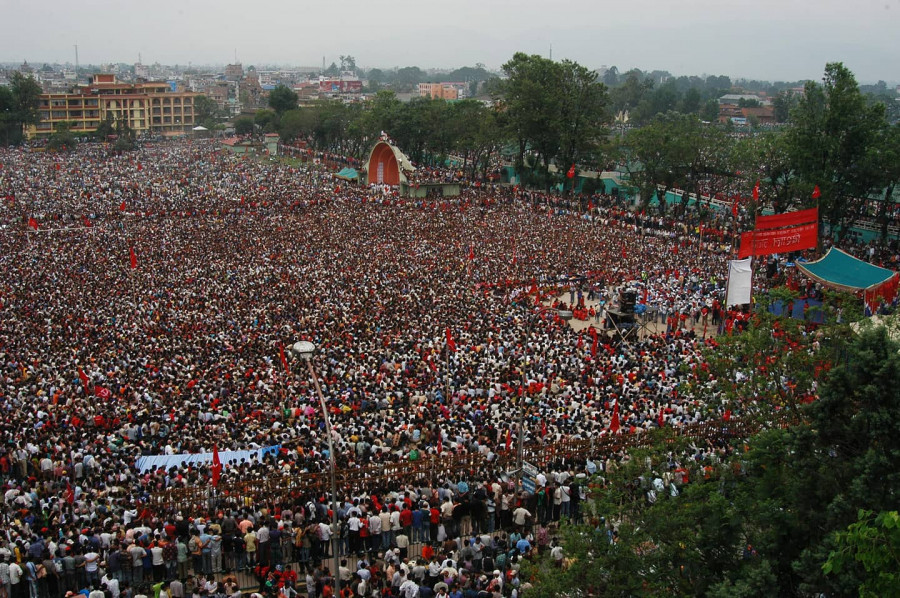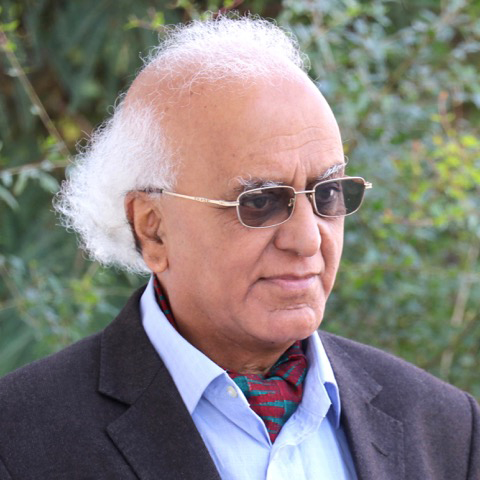Columns
Space and political theatre
Politics in Nepal has employed open spaces for performance and power.
Abhi Subedi
In this brief discussion about shrinking space and bourgeoning politics, I want to begin with a recent reference. Ram Kumari Jhakri, a politician of the young generation speaking at a huge rally of her faction of the Nepal Communist Party in Kathmandu on February 10, 2021, chose to make a few very important remarks about the role of women in Nepali politics.
Though I am familiar with Jhakri's talent and penchant for political of analysis from her student days, I was struck by the strong conviction with which she spoke about the role and responsibility of women in power and politics that even includes the female president of the republic. It was easy to see that Jhakri's ire was multiplied by the alarmingly growing incidents of rape, murder and violence suffered every day by young women in different parts of the country—complicated by the indifference of the federal and provincial governments to such atrocities. The policymakers and the dudes in the present government and semi-political organisations are not playing an effective role to end the miseries of women. Lately, they are saying that women under 40 years of age must take consent from the family to fly abroad on visit visas. Jhakri imbibed the full power of space to speak about freedom and rights of women at this moment. I want to make the following discussion about the power of space as theatre.
A unique contestation among the political parties of Nepal for open spaces to hold rallies has become a common feature of the uprisings in Nepal. Such a quest for open space in a city that is getting more crowded, by the day, presents an irony of strange order. We came up with some startling findings of such open spaces in our studies about the use and power of such spaces in theatrical performances, especially in the cities of Nepal Mandala.
In a very important colloquium on this subject conducted by a theatre scholar and academic, Dr Shiva Rijal, at Yelamaya Kendra some years ago, Satya Mohan Joshi had presented an alarming picture of how in his long life he had seen the open spaces shrinking through the years. Shiva Rijal summing up the debate had said that with the political changes, especially with the shifts in power the open spaces were shrinking, even disappearing. Our main interest in those kinds of discussions was to explore the relation of space with the power of theatre and performance. Now it has become quite clear to us that the psyche of using or occupying spaces, particularly in the metropolis, is related to the psyche of community or group power. The above remarks by Ram Kumari Jhakri dramatise the relation of space, performance and theatre.
The ancient metropolis of the Nepal Mandala is under the threat of the burgeoning cities that vie for constructing characterless monstrosities all around, some even making inroads into the very heart of the great architectural sites of the ancient cultural towns. The agencies of encroachment of such valuable heritage spaces are the successive governments of Nepal, who lack vision and are indifferent to the impact of such growths. The political change of the recent order introduced faceless agendas on the one hand and exposed the spaces of the cities to the eyes of the land hunters, political players and compradors, on the other. This unholy alliance has created the biggest threat to the open spaces that are disappearing fast. This contestation among the political parties to hold rallies and bring their audience has exposed this miserable state of the metropolis once again.
One eyesore is the open space called Khula Manch in Tundikhel. The prime minister whose action of dissolving the house of representative on 5 Pous 2077 has triggered most of today's discontent. But the political parties in power and in the opposition faction feel free to choose spaces that suit their purpose. Their use of the wide street in front of the erstwhile Narayanhiti palace is one telling example. This is the second time after the big earthquake of 2015 that we have realised how the open spaces in the Kathmandu Valley has been alarmingly shrinking. The political parties in power and opposition are vying to occupy any open space they find for holding their rallies. This is indeed a serious and miserable condition. Both factions of the Nepal Communist Party similarly are holding rallies in available spaces by creating gridlocks and freezing people's quotidian life. That is repeated in all cities and towns in the country, but its serious impact is seen in the capital where the spaces are shrinking and the old architectonic sites are under threat.
Nepali political parties share a number of features, some of which are historical and others pragmatic. They could range from economic to political. The psyche of political parties in any country is shaped by a number of dominant concerns of that particular land which the people or the 'imagined communities', to use Benedict Anderson's expression, tend to share. Place or geography is the strongest underlying feature of such a quest.
One mantra that the Nepali politicians and historians reiterate was considered a dictum, or an aphoristic statement made by the founder of modern Nepal, Prithvi Narayan Shah. Shah realised that Nepal is after all sandwiched between two giant neighbours, whom he called boulders, known in historical parlance as Hindustan and Chin. The king is said to have got this revelation in a flash that can be called satori in the lingo of the Japanese Zen. The most interesting, and a little absurd, part is the debate about the significance of this statement. But in another sense, this realisation comes from a certain haunted psyche of space shaped by that geographical conditionality of this land.
It has become a common practice to resurrect this king by both his admirers and detractors. Such gestures are mere travesty. But what is striking is the presence of the spectrality of the boulders in the unconscious of the day-to-day politics of Nepal. We can feel the impact of the ghost when we listen to the political leaders speaking from public spaces, prime ministers meeting neighbourly diplomats in Holmesian fashion, and governments measuring the degrees of friendship through merchandise, medicines and food that pass through the same, to use the malapropism, borders or boulders. In other words, the sense of geographical space governs Nepali politics.
To conclude, the present political imbroglio has chosen open spaces to show ire, power, vision, and bellicose agendas. That politics uses space that shapes performance concerns all in present-day Nepal.




 5.47°C Kathmandu
5.47°C Kathmandu















